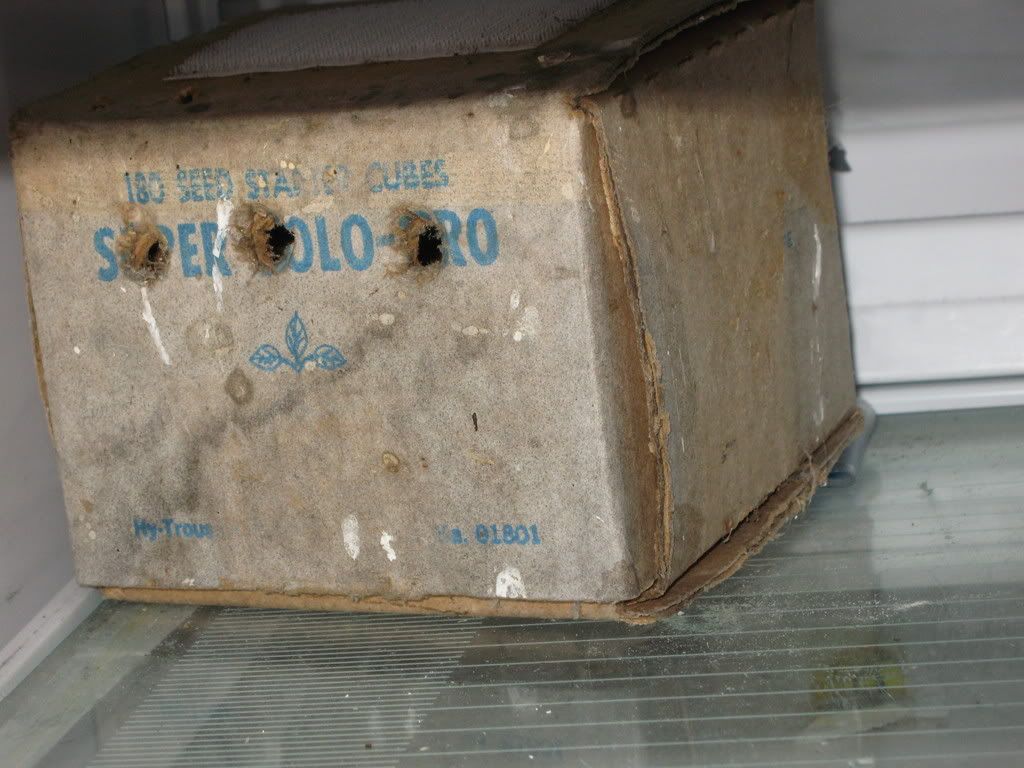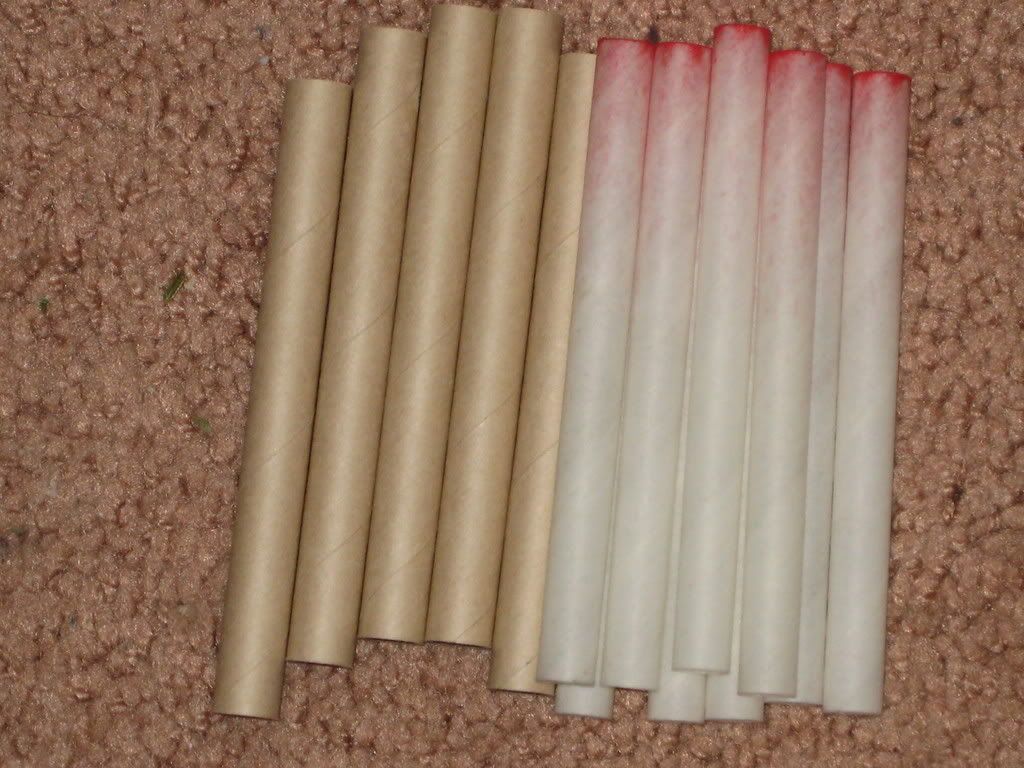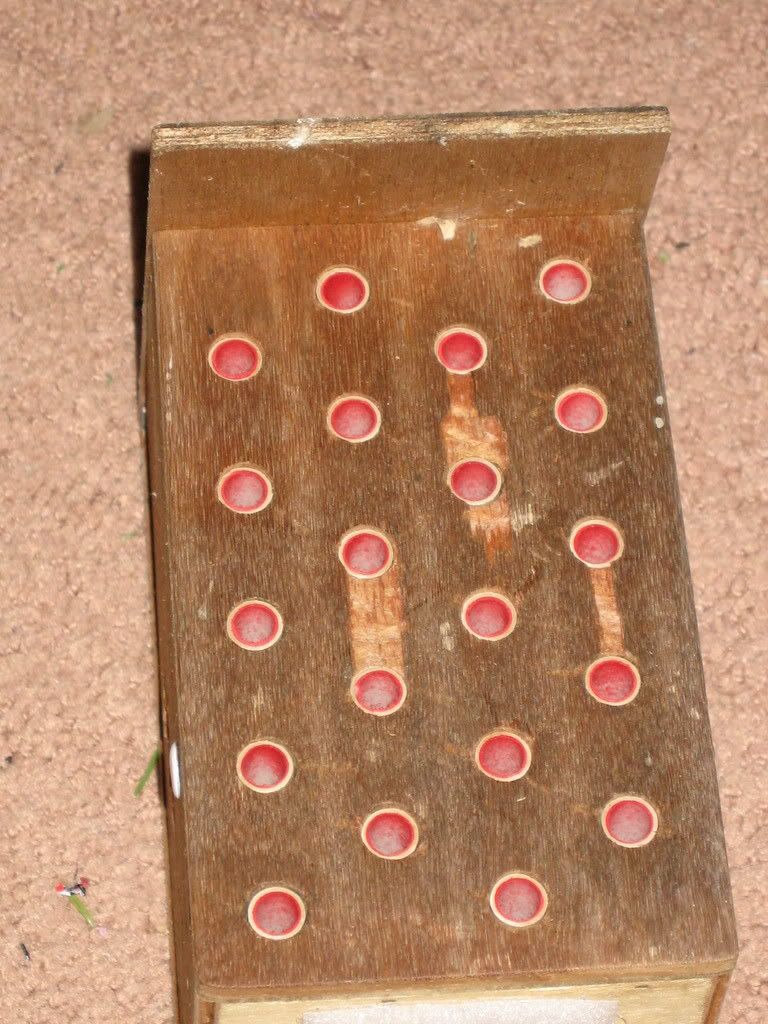 Preparing for pollinators...this is my Mason Bee nest block, and since Spring is upon us, time to clean house! I originally bought this house from http://www.raintreenursery.com/ after spotting the nests in a few other catalogs. I liked the sound of this model, because you replace the nest tubes annually, and the cardboard liners in the holes as needed. According to the mfg.,
Preparing for pollinators...this is my Mason Bee nest block, and since Spring is upon us, time to clean house! I originally bought this house from http://www.raintreenursery.com/ after spotting the nests in a few other catalogs. I liked the sound of this model, because you replace the nest tubes annually, and the cardboard liners in the holes as needed. According to the mfg.,http://www.entomologic.com/ , this type of nest is healthier for the bees. Mason bees (blue orchard bees, osmia lignaria) are very easy to keep...they don't make honey, rarely sting, and are great pollinators (read more here http://www.entomologic.com/BOB/BOBinfo.html ).

This faded cardboard box holds the tubes from last season with "baby bees" in them. I winter them over in the fridge, then attach the box to the bottom of the nest box in the spring. The bees hatch, fly out, pollinate stuff, and fill the nest block with new babies. Then I take down the nest about October, remove the tubes, put them in this box in the fridge, and wait until about April to start the process over.

So... we start with the naked box...some of the "veneer" has come off from woodpeckers discovering the larvae-filled nest tubes. Next insert the cardboard liners, and finally the white nesting tubes...voila'! All set for tenants! I hang this in a protected spot facing east, between the house and garage. These bees are especially fond of "stone and pome" type fruits, so my plums and cherries enjoy their company, too! The only drawback is that the bees resemble houseflies, so I don't kill flies anymore except in the house. I originally considered a honeybee hive, but my uncle raised them, and I remember how much work they were, not to mention disease susceptibility. So Mason bees it is!












9 comments:
Now THIS looks like a Miller Time project I can get into.
(Can't do the worms and Fungi)
Very nice. Keep taking pictures!
Hank
Thanks Hank! That's a benefit of single life-I can have all the strange, hincky projects I want indoors with no complaints!
Yeah, my wife would KILL me if she found bee larvae in the fridge. Awesome idea though.
I might need another fridge... but I must do this. Have I told you lately that I want to be as cool as you are when I grow up? (Probably have to accomplish that by not growing up, actually, but you get the compliment I hope!)
Kim, you are already on the right track-the secret is to NEVER grow up! While I appreciate the kudos, I say you are already hella cool w/no room for improvement! BTW-college "cube" fridges are great for this type of project so as to keep peace with squeamish family members!
Hello Lisa,
I was just reading a TAMU article linked via author Susan Wittig Albert on Texas native bees filling the gaps from bee die off, and talking about nest blocks. Your comment led me here and to view an actual nest block, and it's very interesting.
We only have one refrigerator, which has all space alotted, so the bees are out of luck. With trees and plants blooming through winter, maybe ours don't need a refrigerator? Anyway, you've given me more to think about!
Annie at the Transplantable Rose
Annie, I bet you wouldn't need the refrigeration step...I figured my winter temps would be too cold for them, and the instructions that came with my bees helped me decide. The "Entomo-Logic" link in the post would have more details. I have been keeping these bees for about 3 years now, and the tubes are filled with larvae every year when I pull down the nest in October or so...guess they enjoy my accomodations! :)
Lisa,
I also think you are too cool for school. Thanks for all the pictures!
Do you have any problems, though, with insect invaders in the box? Have you had any problems with disease and your bees?
I would love, love, love to do this, too, but I wonder if there are any challenges specific to my Texas climate?
Thank you margarita! So far I've had no problems with other insects or diseases...just one incident with a woodpecker discovering and dining on the larvae. He didn't eat many, and only the one time. I moved the nest block, and he never came back. I bet they would do fine for you...the Entomo-logic link may have more info on climate variations. Or you could email them-I've found them to be very helpful in the past. Good luck!
Post a Comment